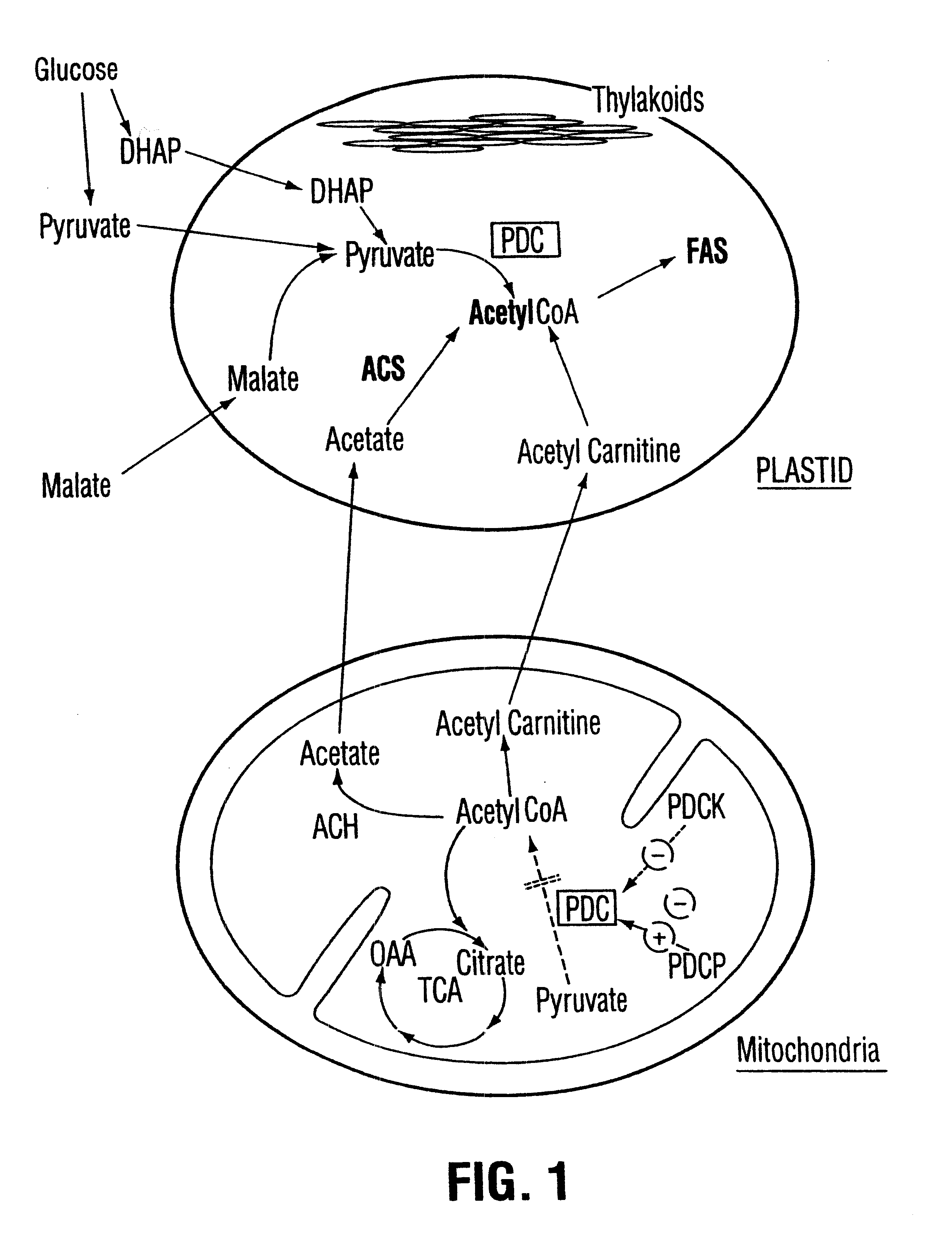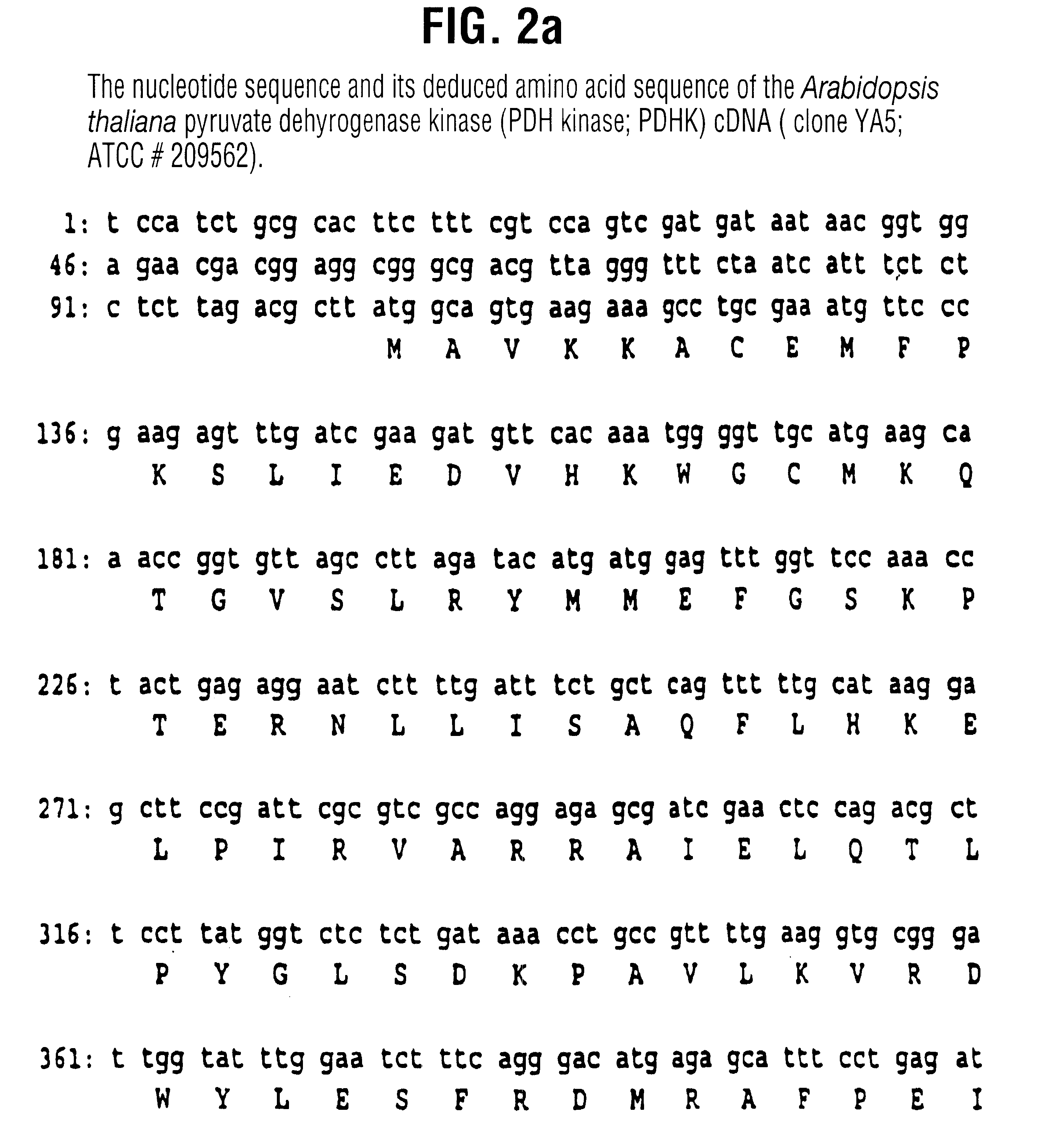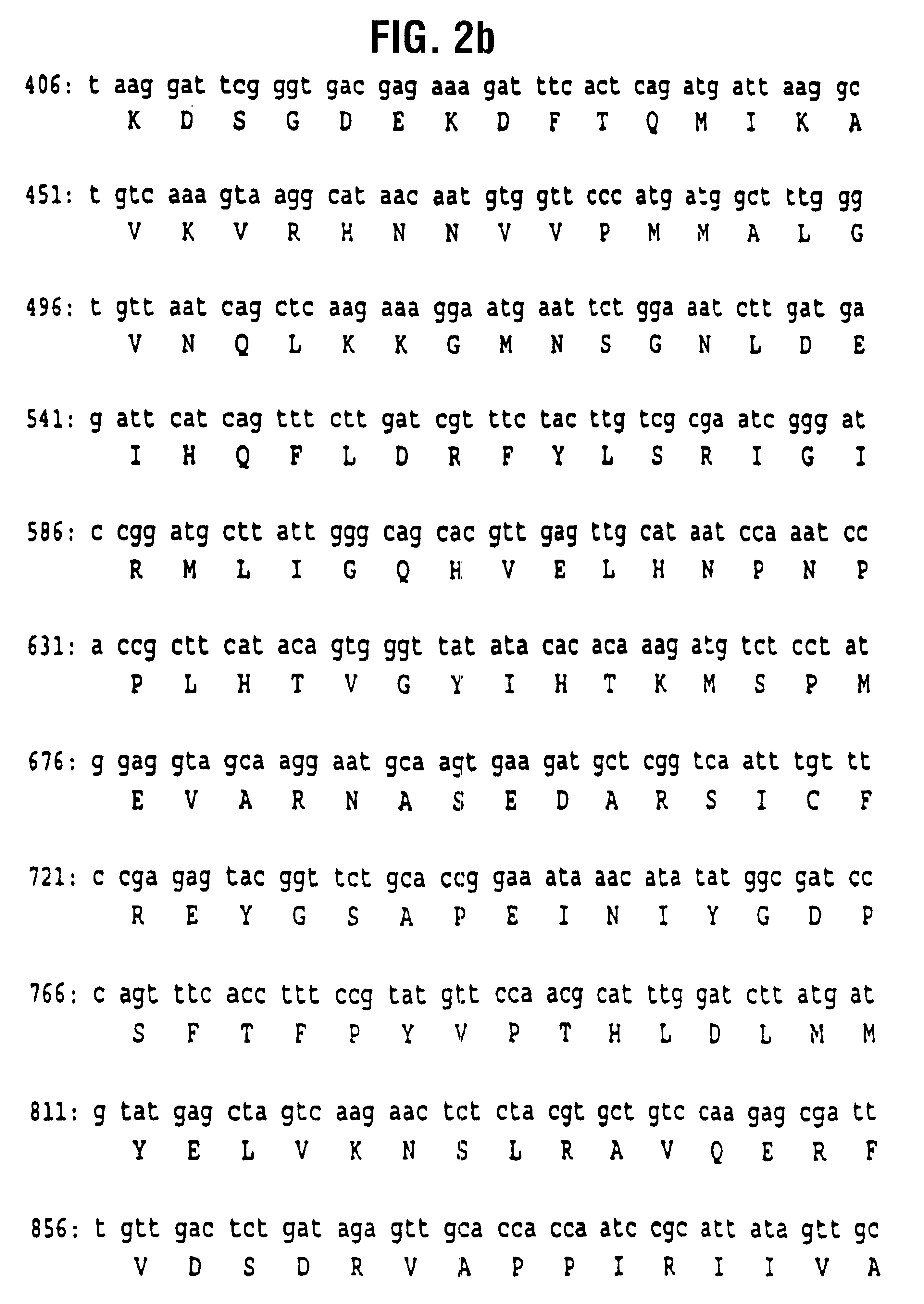Plant pyruvate dehydrogenase kinase gene
a pyruvate dehydrogenase and plant technology, applied in the direction of enzymology, organic chemistry, transferases, etc., can solve the problems of inability to prove the hypothesis, inability to control the flux of carbon through these pathways in vivo, and inability to achieve the effect of reducing the number of acetyl-coa production, increasing mitochondrial pdh activity, and increasing respiration ra
- Summary
- Abstract
- Description
- Claims
- Application Information
AI Technical Summary
Benefits of technology
Problems solved by technology
Method used
Image
Examples
Embodiment Construction
The best modes for carrying out the invention are apparent from the following description of the results of tests and experiments that have been carried out by the inventors.
The inventors chose to use the well-accepted model plant system Arabidopsis thaliana for the cloning of PDHK, as a host system for genetic engineering to alter PDHK expression, and to study the effects of altering PDHK expression on various plant developmental and metabolic processes.
This is because over the past several years, Arabidopsis thaliana, a typical flowering plant, has gained increasing popularity as a model system for the study of plant biology. As a result of the ease with which this plant lends itself to work in both classical and molecular genetics, Arabidopsis has come to be widely used as a model organism in plant molecular genetics, development, physiology and biochemistry (Meyerowitz and Chang, 1985; Meyerowitz, 1987; Goodman et al., 1995). This model dicotyledonous plant is also closely relat...
PUM
| Property | Measurement | Unit |
|---|---|---|
| Fraction | aaaaa | aaaaa |
| Fraction | aaaaa | aaaaa |
| Volume | aaaaa | aaaaa |
Abstract
Description
Claims
Application Information
 Login to View More
Login to View More - R&D
- Intellectual Property
- Life Sciences
- Materials
- Tech Scout
- Unparalleled Data Quality
- Higher Quality Content
- 60% Fewer Hallucinations
Browse by: Latest US Patents, China's latest patents, Technical Efficacy Thesaurus, Application Domain, Technology Topic, Popular Technical Reports.
© 2025 PatSnap. All rights reserved.Legal|Privacy policy|Modern Slavery Act Transparency Statement|Sitemap|About US| Contact US: help@patsnap.com



